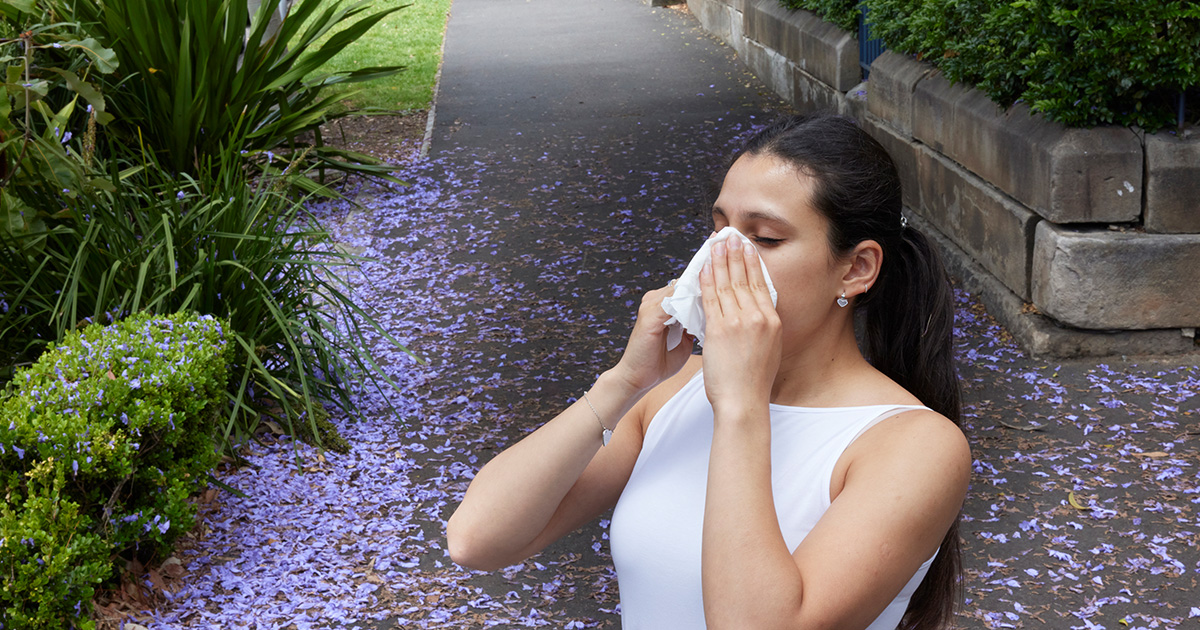The Woolcock Institute of Medical Research

Spring asthma management strategies
Spring offers additional challenges for people living with asthma. High pollen days, hay fever, dust and mould, pet hair and thunderstorms can all make asthma more difficult to control and increase the risk of exacerbations.
There are several ways you can be proactive about your respiratory health, according to respiratory specialist Dr Aruvi Thirvarudchelvan.
They can be broken down into three main strategies:
MONITOR AND AVOID TRIGGERS
- Check Pollen Counts – these are reported in News bulletins but are also available online, for example through AusPollen.edu.au which has pollen monitoring sites for each state; for NSW it is https://www.sydneypollen.com.au.
- Be aware of high pollen days and take precautions
- Stay Indoors – On high pollen days, stay inside and keep your windows and doors closed.
- Use Your Air Conditioner – Make sure it’s turned to circulate so that it doesn't bring the outdoor pollens inside.
- Keep on Top of Cleaning – Regular, effective cleaning and maintenance can manage and reduce mould around the home. Using a damp or electrostatic cloth means you’ll attract and trap dust particles rather than spreading them into the air.
- Manage Fido and Kitty – Pets moult as the weather warms, increasing the amount of dander around the home. Groom them outdoors, regularly vacuum floors, carpet and upholstery, wash pet bedding weekly in hot water and keep pets out of the bedroom to create an allergen-free zone.
- Watch Out for Thunderstorms – If grass pollen is a problem for you, thunderstorms and wind gusts could pose a serious risk in terms of an exacerbation, so stay inside on high-wind days with windows and doors closed.
Want to stay up to date with our research on sleep and respiratory conditions?
Sign up to our quarterly newsletter
MANAGE HAY FEVER
- Treat Symptoms – Managing hay fever can help control asthma.
- Use Preventer Nasal Sprays – Saline, antihistamine, and corticosteroid nasal sprays are highly effective for hay fever and should be used regularly to prevent symptoms.
- Consult A Doctor – If your allergies are severe or don't improve with medication, see a doctor.
MAINTAIN ASTHMA MANAGEMENT
- Review Your Action Plan – Regularly check your written asthma action plan with your doctor.
- Use Preventer Medicine Daily – An asthma preventer inhaler is essential for reducing inflammation and preventing symptoms, so use it as prescribed.
- Carry Your Reliever – Always have your reliever (rescue) inhaler with you.
- Keep A Symptom Diary – Track your symptoms to identify specific triggers and patterns.
While Spring is a higher-risk time of the year, managing asthma year-round is important. People with asthma should consider getting vaccinated against the flu. Steer clear of cigarette smoke, which can aggravate asthma and make medicines less effective. Consult your GP at least once a year, or whenever there is a significant change in your symptoms, to review your asthma management plan and ensure your inhaler technique is correct.>
Asthma Australia has produced their “Stay Well With Asthma This Spring” checklist to help people manage their asthma and allergies. Go to their website to find out more.










